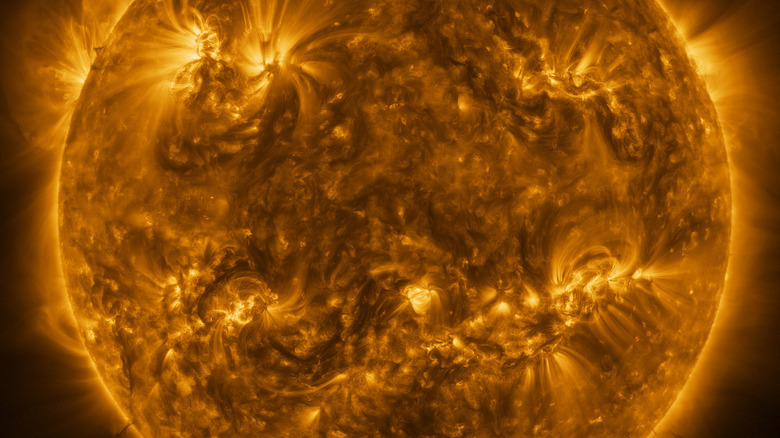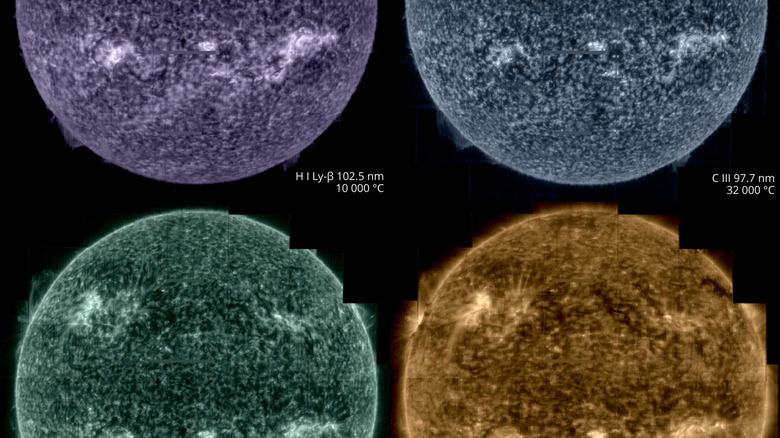Stunning Images Of The Sun Snapped By Solar Orbiter
The European Space Agency's Solar Orbiter spacecraft has snapped some stunning images of our sun up close, including the highest resolution image ever taken of its full face and corona.
The image, taken with the Extreme Ultraviolet Imager (EUI) instrument on March 7, 2022, was captured when the spacecraft was just under 50 million miles from the sun's surface, which is around halfway between Earth and the sun. To see the full face of the sun as well as its atmosphere, or corona, the EUI instrument snapped 25 individual images that were stitched together into one big mosaic.
"In total, the final image contains more than 83 million pixels in a 9148 x 9112-pixel grid," ESA says. "For comparison, this image has a resolution that is ten times better than what a 4K TV screen can display."
The EUI instrument looks in the extreme ultraviolet wavelength, which allows it to pick out details in the sun's extremely hot corona. In the image, you can see dark lines spreading out from the sun's surface, which are prominences of hot gas being shot out into space, contributing to space weather events.
If you want to see the full image in massive high resolution, you can download it from ESA's website.
A spicy series of images
Another cool — or rather, hot — set of images was taken by another instrument on Solar Orbiter called SPectral Imaging of the Coronal Environment (SPICE). This remote sensing instrument looks at the sun in the ultraviolet wavelength, seeing the different temperatures of different layers of the sun's atmosphere.
"SPICE is designed to trace the layers in the Sun's atmosphere from the corona, down to a layer known as the chromosphere, getting closer to the surface. The instrument does this by looking at the different wavelengths of extreme ultraviolet light that come from different atoms," ESA explains. "In the SPICE sequence of images purple corresponds to hydrogen gas at a temperature of 10 000°C, blue to carbon at 32 000°C, green to oxygen at 320 000°C, yellow to neon at 630 000°C."
While in most everyday situations you'd expect to find higher temperatures when you get close to a hot object, the sun isn't like that. The hottest part of the sun is actually its corona, which reaches 1,000,000°C, while its surface temperature is a much lower 5,000°C. This is one reason why Solar Orbiter is looking at the sun's corona, to work out how this huge difference in temperatures comes about.
These readings using SPICE were taken on the same day as the EUI readings as the spacecraft passed the Sun-Earth line. That means they can be compared with readings taken from Earth-based instruments, in order to build up a fuller picture of how changes at the sun are propagated out through the solar system.

